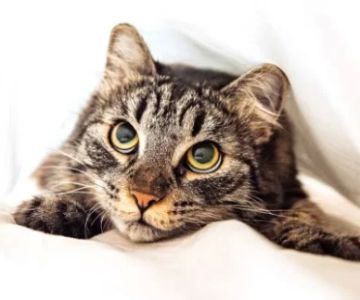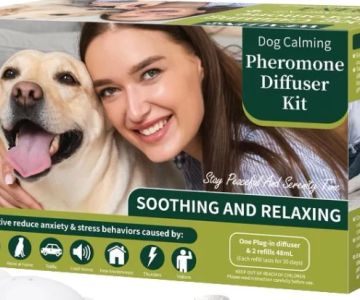- understanding-why-your-cat-is-vomiting-foam-and-bile
- common-causes-of-foamy-and-bile-vomiting-in-cats
- when-should-you-be-concerned-vet-guidance-matters
- real-stories-from-pet-owners-and-early-warning-lessons
- how-hidden-brook-veterinary-can-support-your-cat
1. Understanding Why Your Cat Is Vomiting Foam and Bile
Finding your cat vomiting foam and bile can be worrying, especially if it happens repeatedly or without an obvious cause. Unlike hairball vomiting — which many cat owners are familiar with — foamy and bile-based vomit often signals an underlying issue that needs attention. While occasional vomiting may not be a medical emergency, it's essential to understand what's normal and what's not.
1.1 What Does the Vomit Actually Contain?
When a cat vomits white or yellow foam, it's usually gastric juices and bile. These fluids are produced in the digestive tract and help with digestion. If your cat's stomach is empty, these are the substances that come up — often resulting in a frothy or yellow-tinted mess. It’s unpleasant to see, but it can also be an important clue.
1.2 Acute vs. Chronic Vomiting
Isolated incidents may result from dietary indiscretions — like eating too fast or ingesting something irritating. Chronic or repeated episodes, however, may point to gastrointestinal disease, food intolerance, or systemic illness. Context, timing, and frequency matter.
2. Common Causes of Foamy and Bile Vomiting in Cats
Understanding the potential causes behind your cat vomiting foam and bile can help guide next steps. Here are several issues to consider — ranging from benign to serious.
2.1 Empty Stomach Syndrome
Cats that go too long without food — especially overnight — can develop irritation from excess stomach acid. This often leads to vomiting first thing in the morning. Feeding a small meal before bed can sometimes solve the issue.
2.2 Food Sensitivities or Sudden Diet Changes
Switching food brands or flavors too quickly can trigger digestive upset. Cats may vomit bile or foam in response to ingredients they don’t tolerate well. Gradual food transitions are key.
2.3 Inflammatory Bowel Disease (IBD) or Pancreatitis
These chronic conditions often present with intermittent vomiting, weight loss, and changes in appetite. The vomit may contain bile and be accompanied by lethargy or diarrhea. IBD and pancreatitis require veterinary diagnosis and long-term care.
2.4 Hairballs and Gastrointestinal Blockages
Although more common in long-haired breeds, hairballs can sometimes move beyond the stomach and trigger vomiting of foam or bile. In worse cases, an obstruction from ingested objects or masses may prevent proper digestion — a medical emergency.
2.5 Parasites, Toxins, or Systemic Illness
Internal parasites, exposure to cleaning products, or diseases like hyperthyroidism and kidney failure can also lead to foamy or bile-laced vomit. Lab work is often needed to rule out these causes.
3. When Should You Be Concerned? Vet Guidance Matters
Occasional vomiting might not be alarming. But if your cat vomits foam and bile more than once or twice a week, skips meals, becomes lethargic, or has changes in litter box habits, it’s time to consult a vet. Persistent vomiting can lead to dehydration, nutrient loss, and worsening underlying conditions.
3.1 Red Flags to Watch For
— Blood in vomit or stool — Swollen or painful abdomen — Rapid weight loss — Excessive drooling or signs of nausea (lip licking, pawing at mouth) — Vomiting combined with diarrhea or fever
3.2 Diagnostic Tools Your Vet May Use
Veterinarians will typically perform a physical exam, followed by diagnostics such as bloodwork, urinalysis, x-rays, or abdominal ultrasounds to determine the root cause. Treatment may range from antacids and diet changes to hospitalization for fluids or surgical intervention.
4. Real Stories from Pet Owners and Early Warning Lessons
Megan from Oregon shared that her tabby, Jasper, began vomiting foam every morning for a week. She thought it was just hairballs — until his energy levels dropped. A visit to Hidden Brook Veterinary revealed early-stage pancreatitis. With treatment and a diet change, Jasper made a full recovery — and Megan learned how subtle the signs can be.
Another case came from Ben in Virginia. His senior cat, Luna, began vomiting bile after skipping meals during a recent household move. The vet diagnosed gastritis from stress-induced fasting. A mild antacid and small, frequent meals restored her appetite and stopped the vomiting within days.
These stories remind us: the sooner you act, the better your cat’s outcome may be.
5. How Hidden Brook Veterinary Can Support Your Cat
If your cat is vomiting foam and bile, don’t guess — get help. Hidden Brook Veterinary offers compassionate, thorough diagnostics and tailored treatment plans for feline gastrointestinal concerns. Whether it's diet advice, in-depth lab work, or managing chronic conditions, their experienced team works with you to restore your cat’s health and comfort.
5.1 A Personalized, Preventive Approach
No two cats are the same — and Hidden Brook understands that. They offer nutritional guidance, stress management support, and preventive care strategies designed to reduce recurrence and catch problems early.
5.2 Peace of Mind for Pet Parents
There’s nothing more comforting than knowing your furry companion is in good hands. If your cat is vomiting foam and bile and you’re unsure what to do, trust Hidden Brook Veterinary to provide both answers and solutions with warmth and expertise.












